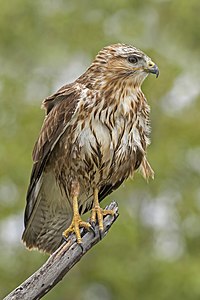
Photo from wikipedia
Common pastures were once the dominant type of land use in many European regions. However, during the past 150 years, they have declined dramatically. Recent studies have shown that they… Click to show full abstract
Common pastures were once the dominant type of land use in many European regions. However, during the past 150 years, they have declined dramatically. Recent studies have shown that they are hotspots for rare plant, butterfly, and bird species in the study area, the Bavarian pre‐Alps (southern Germany). However, studies on the value of these pastures for Orthoptera (hereinafter termed “grasshoppers”) have been scarce. Here, we studied the effects of traditional summer grazing in common pastures on grasshopper assemblages. Our study revealed that grasshopper species richness did not differ between common pastures (n = 57) and controls (n = 57). By contrast, density of all and of threatened species varied between common pastures and controls in all plots and within the two vegetation types with the highest grasshopper abundance, grasslands on mineral soil and fens. Two threatened species, Pseudochorthippus montanus and Stethophyma grossum, were identified as indicators for common pastures; controls had no indicative species. Traditional low‐intensity grazing in common pastures has resulted in open and heterogeneous swards with some bare ground, a low cover of litter and an intermediate vegetation height favouring high densities of grasshopper species in general and threatened species in particular. This is especially true for the two most productive vegetation types, grasslands on mineral soil and fens. To promote biodiversity in general and grasshopper densities in particular, we recommend maintaining traditional cattle grazing (stocking capacities: 0.5–2.0 livestock units/ha) in common pastures. Where possible, this grazing regime should also be introduced in the surrounding landscape.
Journal Title: Insect Science
Year Published: 2022
Link to full text (if available)
Share on Social Media: Sign Up to like & get
recommendations!